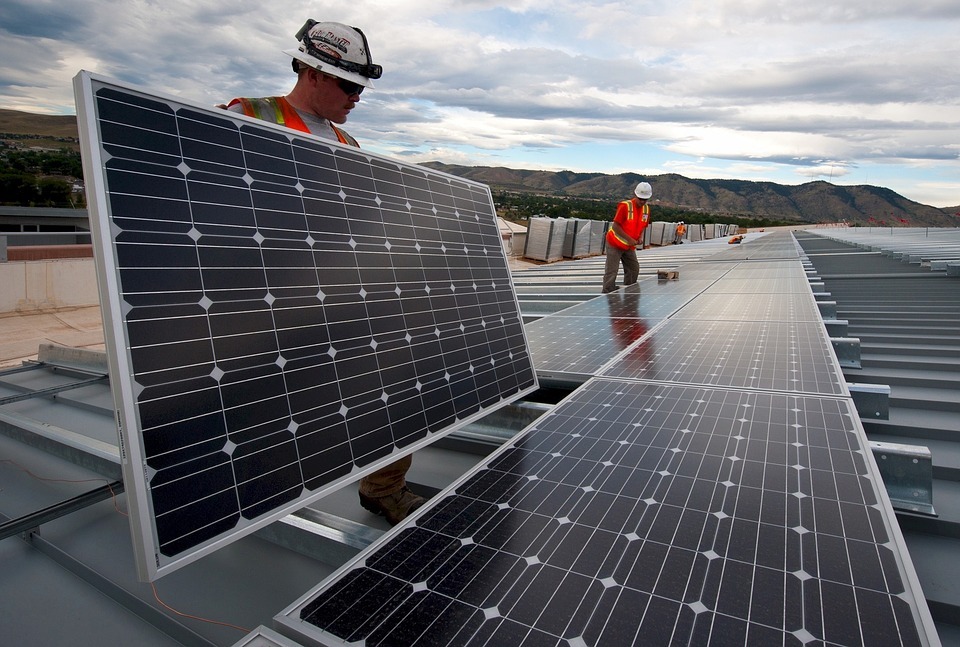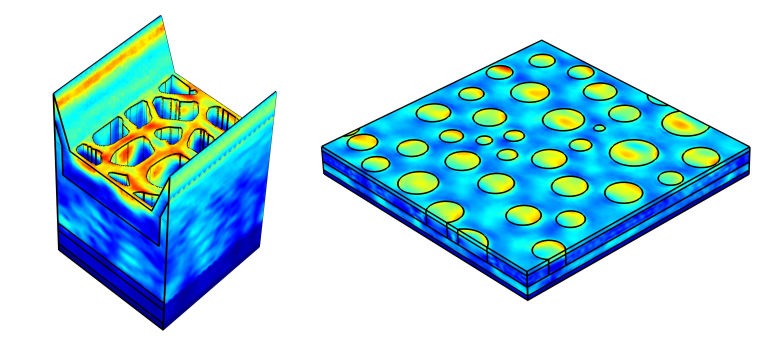
In this week’s Solar News Report, tech company Edisun claims the largest solar tracker installation for a rooftop system, a Puerto Rican fire department turns to a solar panel array for reliable power following Hurricane Maria, and new research identifies opportunities for more efficient solar panels modeled after butterfly wings.
Edisun activates the world’s largest rooftop solar tracker installation
In an effort to prove that ground-mount projects aren’t the only application of solar trackers, tech startup Edisun Microgrids installed a 1 megawatt (MW) commercial rooftop solar array in Oxnard, CA online. The array is outfitted with more than 2,900 dual-axis solar trackers, which makes it the largest rooftop tracker system in the world. Edisun hopes their trackers will increase energy production by 30 percent when compared to a fixed rooftop array.
Edisun took aim at several common issues with rooftop tracking systems, namely wind and system weight. Their low-profile, high strength design eliminates wind as a threat to the array, while an effort to reduce weight per square foot is Edisun’s solution to the common issue of tracking systems being too heavy for a roof to support.
Robert Ross is managing partner at Harry Ross Industries (HRI), the firm that owns the building on which the system is located. He stated, “The addition of PV Booster technology to our Oxnard facility made sense for a number of reasons, in particular because it required less investment to get the same output as a stationary system. It’s also vitally important to HRI that we provide the most environmentally friendly facilities to our tenants. We are confident that we’ve accomplished this mission by deploying Edisun’s cutting-edge technology.”
In a time of unreliable power, a fire station in San Juan looks to solar power
A San Juan fire station took a step towards restoring emergency services in the city following Hurricane Maria by installing a local microgrid powered by a 4-kilowatt (kW) solar panel system. The system includes battery storage and provides the station with full power, including its communication system. Additionally, it is designed to withstand 150 mph winds in the event that another hurricane sweeps through the island.
“Putting this in is the difference between life and death in this community,” said Captain Richard Birt, a Las Vegas firefighter assisting with the installation. Much of Puerto Rico has been running on diesel-powered generators, which are unreliable and pose little benefit to the long-term stabilization of the island’s power grid. When the grid has been repaired, the solar system will be able to connect to it or continue to function alone, offering grid resiliency and flexibility in the event of future natural disasters.
Microscopic structure of butterfly wings has implications for solar panel design
A recent paper in the journal Science Advances proposes a new inspiration for future solar cell design: butterfly wings. Lead author Radwanul Siddique and his team focused their research on the nanostructures within butterfly wings.
For example, some butterflies have microscopic holes that trap and absorb light. For butterflies, this results in differing colors and appearances on their wings, but for solar engineers, the possibility of absorbing more light means higher panel efficiencies. As solar technology improves rapidly, any new advance in design, materials, or software is important as it can lead to increased clean energy production and savings for consumers.

As with any brand-new solar discovery, these new solar cell designs are not yet available to the general market yet. The design is promising, however, and with a few years of work and further development, home solar installations could be producing energy from the sun based on inspiration from butterflies.






